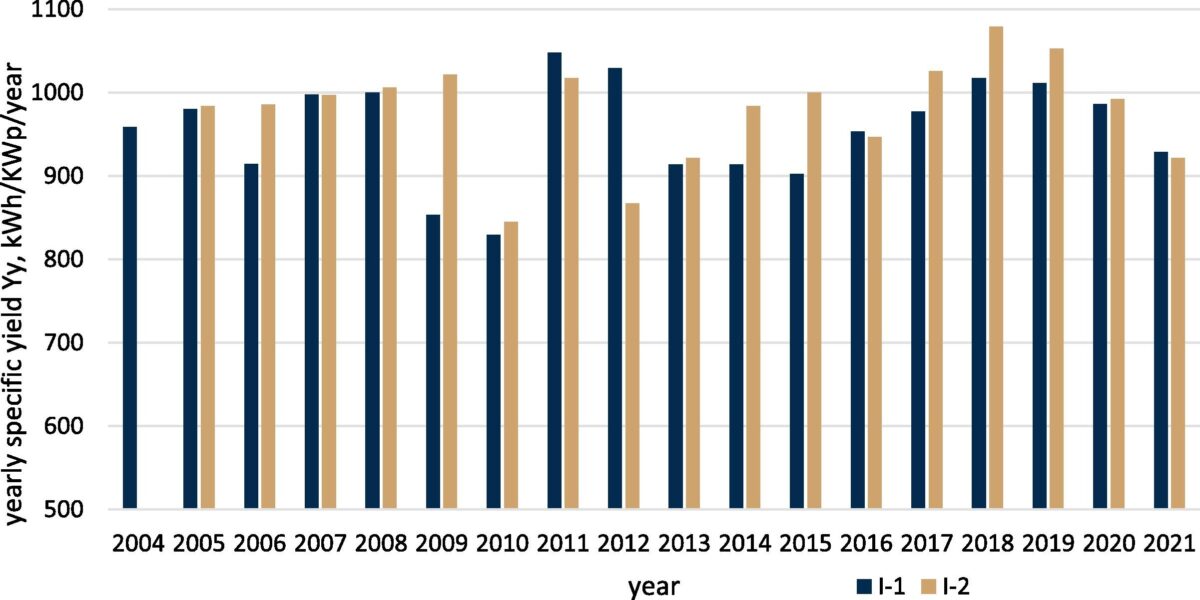Scientists at the Polish Academy of Sciences have studied PV installations older than 15 years and observed a decrease in energy productivity ranging from 1.9% to 2.9% over a 16-year period. They conducted their tests on two rooftop PV systems in Sinsheim, a town in southwestern Germany.
The first system, a 37.8 kW grid-connected array, consists of 252 glass-backsheet solar modules, each with an output of 150 W, provided by Suntech, a Chinese manufacturer. The second installation is an 18.48 kW PV system comprising 112 Suntech glass-backsheet modules with an output of 165 W. Both systems utilize inverters from Solarmax, a German manufacturer.
Based on their analysis using NREL's HOMER software, the scientists reported that the PV installations generated a total of 958 MWh during the 2004-2021 period. They also observed that the larger system experienced some inverter failures in 2009 and 2010.
The research group discovered that the 18.48 kW system exhibited higher energy unit productivity compared to the 37.8 kW array, particularly in 2009 and 2014-2015. They determined that the annual degradation factor for the first system was 0.11%/year, while for the second system it was 0.20%/year.
Furthermore, the researchers found that the actual energy production per available irradiation was 0.817 for the 18.48 kW system and 0.826 for the 37.8 kW system. The measured specific yield divided by theoretical specific yield for the initial two years of operation was 96.8% and 95.8%, respectively.
Their analysis also indicated a power degradation rate of 1.9% in the largest system and 2.9% in the smaller system over the 16-year period. Additionally, the yearly power degradation rates were observed to be 0.11%/year for the 37.8 kW array and 0.20%/year for the 18.48 kW installation, which the researchers noted as significantly lower values compared to those reported in existing literature.
Thy described their findings in “Evaluation of degradation energy productivity of photovoltaic installations in long-term case study,” which was recently published in Applied Energy.
“The main strength of the proposed extended methodology is the elimination of the impact of weather conditions on the scale of annual differences,” they concluded.
This content is protected by copyright and may not be reused. If you want to cooperate with us and would like to reuse some of our content, please contact: editors@pv-magazine.com.




3 comments
By submitting this form you agree to pv magazine using your data for the purposes of publishing your comment.
Your personal data will only be disclosed or otherwise transmitted to third parties for the purposes of spam filtering or if this is necessary for technical maintenance of the website. Any other transfer to third parties will not take place unless this is justified on the basis of applicable data protection regulations or if pv magazine is legally obliged to do so.
You may revoke this consent at any time with effect for the future, in which case your personal data will be deleted immediately. Otherwise, your data will be deleted if pv magazine has processed your request or the purpose of data storage is fulfilled.
Further information on data privacy can be found in our Data Protection Policy.